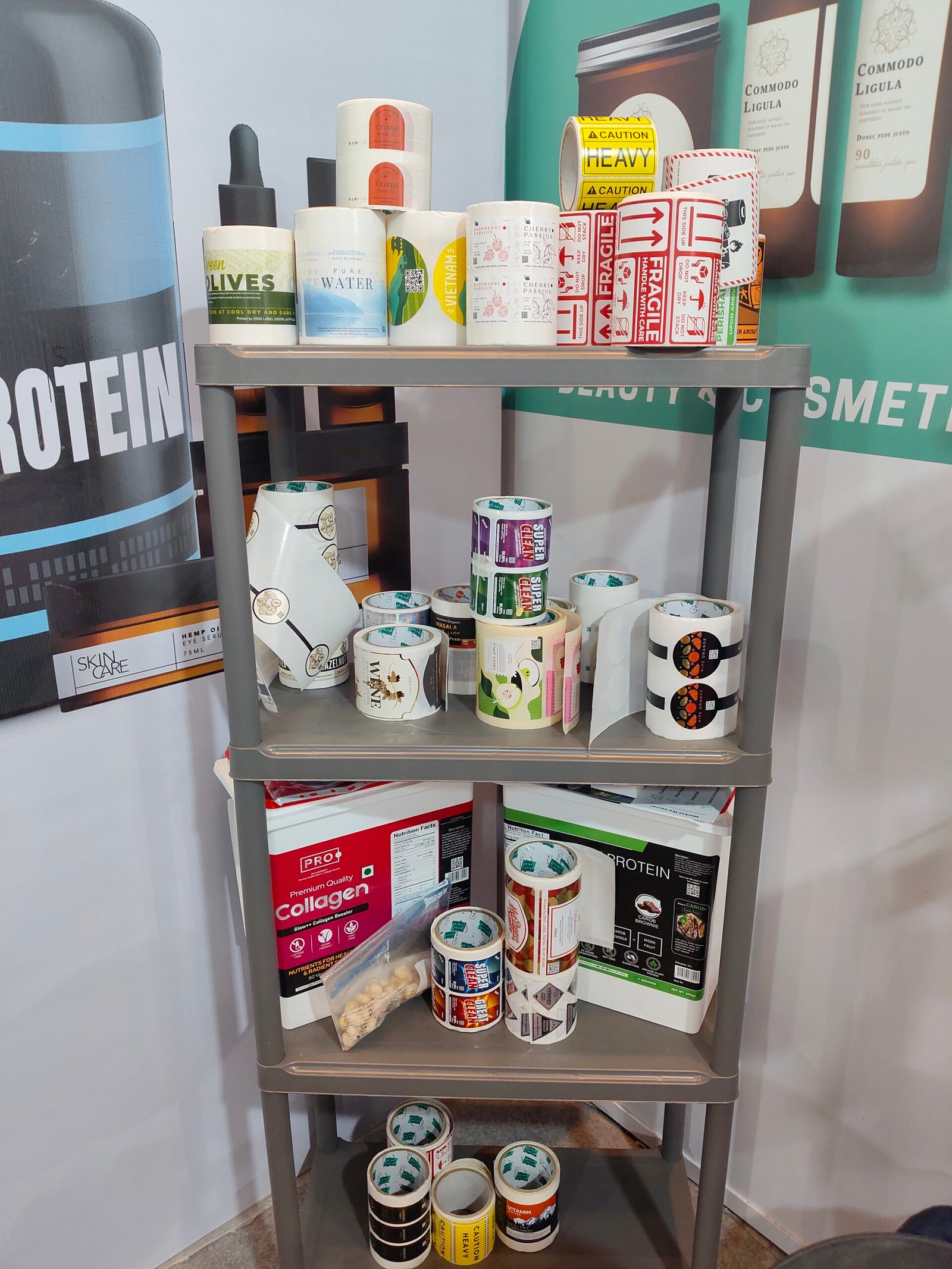Gurugram-based Dino Label Digital is carving a niche in the fast-evolving digital label printing space by providing to new-age, low-volume, high-mix brands, particularly in the beauty and consumer product segments.
Speaking at CMPL 2025 in Mumbai, managing director Shakti Jain, who represented the company, shared insights on Dino’s journey, its digital-first approach, and its evolving customer base.
Dino Label Digital is the latest vertical of Great Eastern ID Tech, a family-owned enterprise with more than four decades of experience in barcode technology, labeling systems, and traceability solutions for manufacturing, logistics and retail sectors.
“We began by supplying price label stickers to retail stores, which evolved into offering barcode solutions for exporters sending goods to the US and Europe,” Jain recalled. “Eventually, we began selling barcode printers, and from there, moved into manufacturing flexo-printed labels for outer box packaging. It was a natural evolution of a complete solution — hardware, labels, ribbons, and custom-built traceability software.”
While the company’s core still lies in supplying barcode and traceability solutions, its latest digital printing venture reflects a broader diversification strategy. “We were largely serving industrial customers, but we saw a rising demand for short-run, quick-turnaround, customised label printing from emerging consumer brands. That’s what led us to digital,” Jain said.

Dino Label Digital launched its digital operations in April 2024, installing a five-colour Konica Minolta AccurioLabel 400 press (CMYK+White). The decision to go digital-only, bypassing conventional narrow-web flexo, was deliberate. “Conventional printing requires specialised skills and scale, while digital allows quicker setups, lower inventory risks, and serves the growing demand for smaller batches. It made strategic and operational sense,” Jain said.
The customer base for Dino’s digital labels is primarily made up of startup and D2C (direct-to-consumer) brands. “Most of our clients are young B2C companies across cosmetics, beauty, and home care segments,” Jain said, adding that the company offers only self-adhesive labels for now, with in-mould label (IML) capabilities under testing.
He acknowledged that while digital printing offers flexibility, scaling up remains a challenge. “Startups usually place small orders, so you need a large number of customers to achieve economies of scale. Unlike flexo, where five big clients can fill up your press, digital demands volume through customer acquisition,” he explained.
Another challenge is customer education. “Many clients are familiar with conventional embellishments like spot UV or foil stamping and expect the same in short-run digital jobs,” he said. “We explain how digital printing on metallized substrates can mimic premium effects without the need for traditional embellishments.”
Jain emphasized that good design, material selection, and print quality can often deliver more impact than multiple finishing processes. “It’s about aligning expectations and helping customers understand what’s possible — and practical — with digital.”
At CMPL 2025, Dino Label Digital aimed to deepen its engagement with brand owners and expand its customer base. The company had earlier participated in the Delhi edition of the show. “These platforms are valuable because they connect us directly with decision-makers — brand founders and marketing heads — who are looking for reliable packaging partners. We’re still learning about market needs, but the response has been promising.”
Looking ahead, Dino plans to expand its packaging offerings beyond labels, despite limitations due to its 13-inch press width. “We’re not doing pouches yet, but it’s on the road map. Clients increasingly want one-window solutions for all their packaging needs — be it labels, pouches, or cartons. Our goal is to grow our share of their packaging requirements.”
With its operations now standardized and systems in place, Dino’s current focus is squarely on customer acquisition. “Our setup is ready — now it’s about finding the right partners and helping them grow. When they scale, we scale,” Jain concluded.












